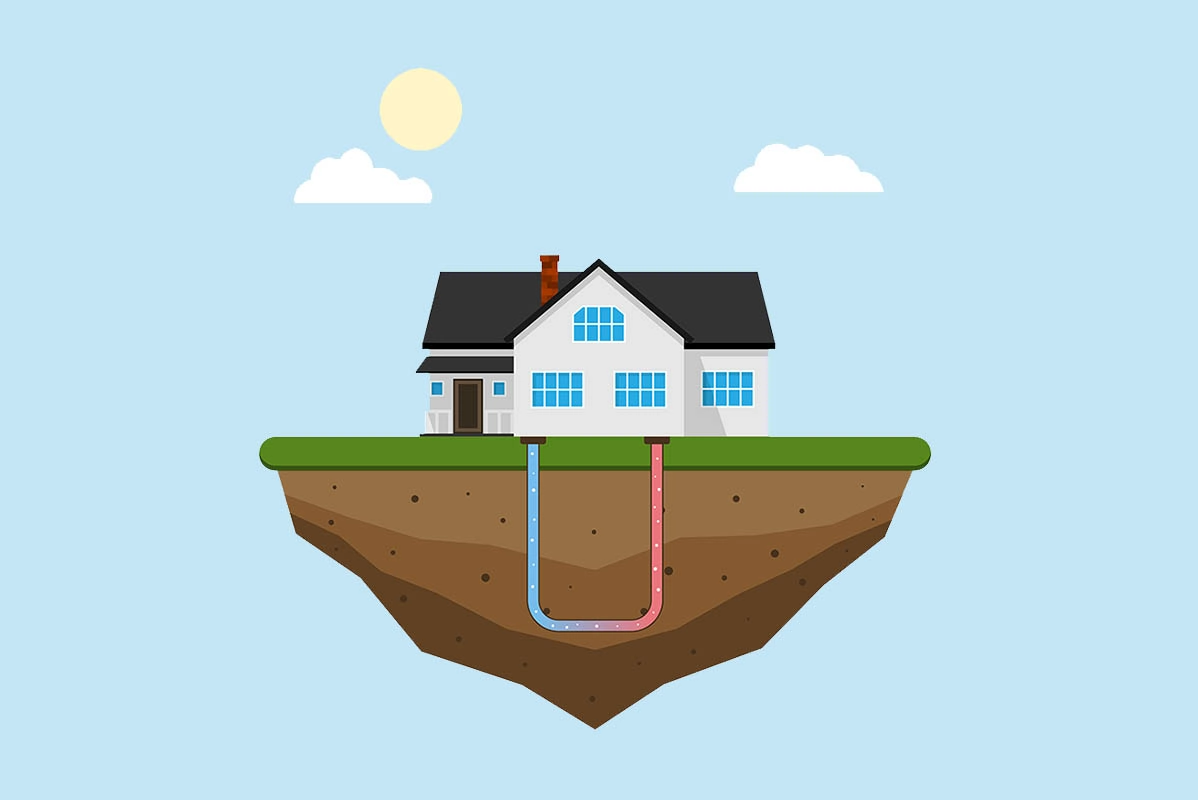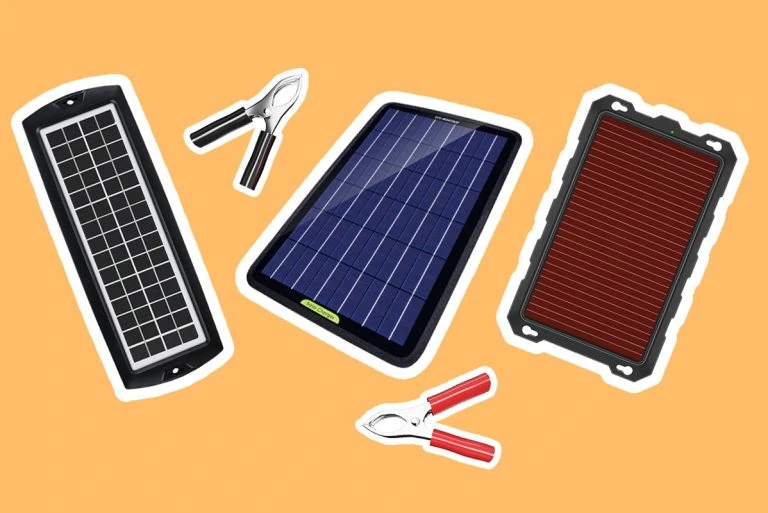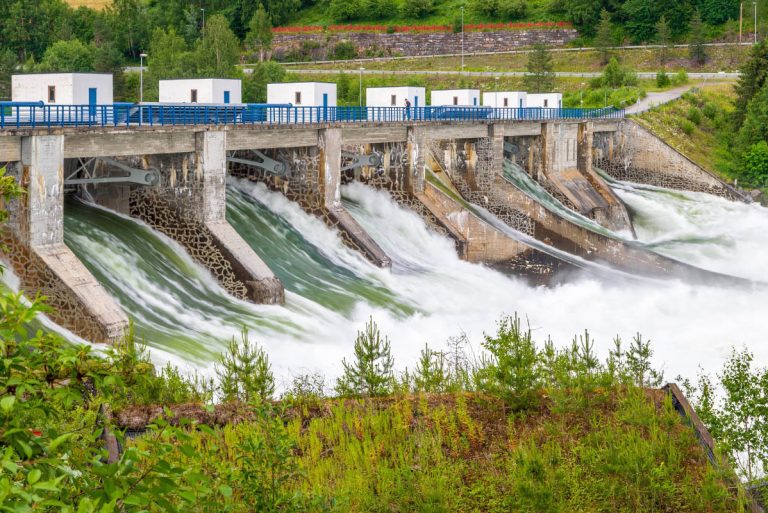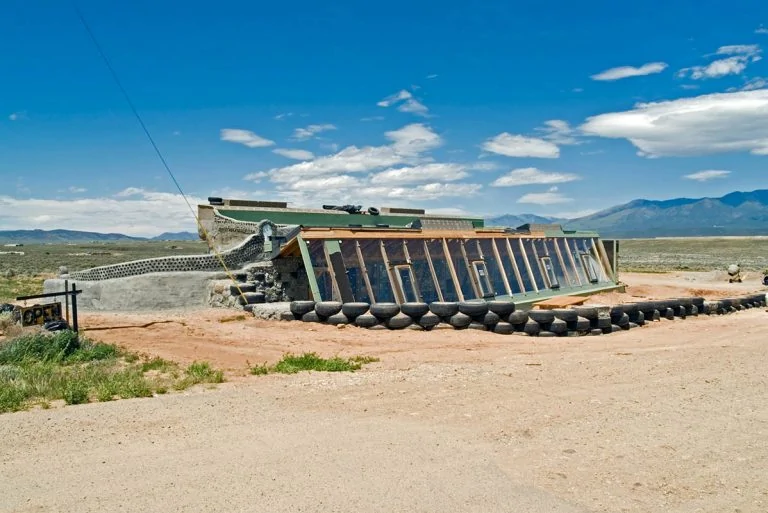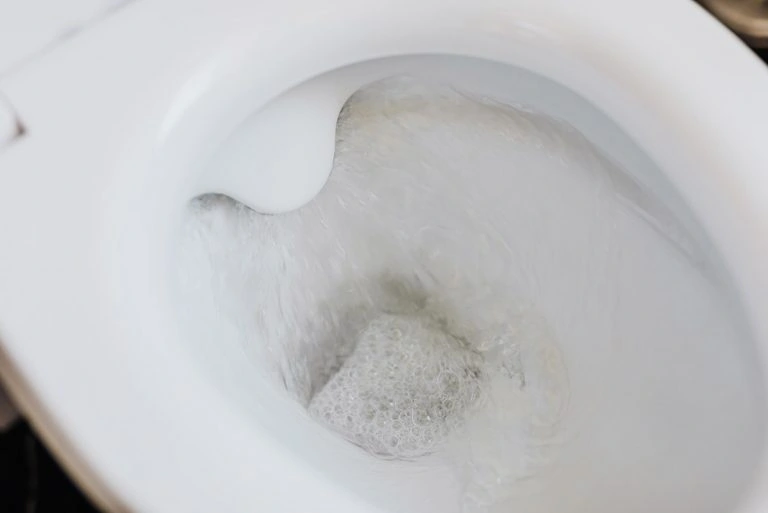Are you like many homeowners wanting to save on home heating and cooling bills while doing your part to save the planet? A geothermal home heating and cooling system may meet your energy needs and personal climate goals.
In this article, we’ll dig deep to find out how geothermal systems work smarter – not harder – than traditional home HVAC to help you save money, energy, and the Earth.
Given that, in the United States, 40% of all energy consumed and its associated greenhouse gas (GHG) emissions is due to buildings — especially heating and cooling — geothermal energy should be a large part of the solution to our climate crisis.
What is geothermal heating in a home?
Taken from the Greek, geothermal literally means “earth heat.”
As a type of renewable energy, geothermal energy production involves pulling up the heat as steam or extremely hot water from a mile or more below the Earth’s surface. The heat in the form of steam drives a turbine to produce electricity for cities and towns on a grand scale.
By contrast, a residential geothermal HVAC system, commonly called a geoexchange, earth-coupled, or earth energy system, relies on the sun’s radiant energy absorbed by and stored in the ground all around your home.
Another way of looking at it is that geothermal energy is naturally stored solar energy, available 24/7/365.
How does geothermal energy work for the home?
Approximately 50% of all the sun’s energy that reaches the Earth is absorbed by its surface.
Here’s a diagram that illustrates how the sun’s radiant energy is distributed to Earth and its atmosphere:

Below the frost line, the temperature of the Earth stays at a relatively constant 48-52℉ throughout the year. (This temperature range may be higher or lower in very hot or cold regions.) It is this fact that geoexchange HVAC is built upon.
Exactly where the frost line is in your area is highly dependent on your latitude, soil type(s), and climatic conditions. It could be a few inches up to 100 inches below the surface.
It is critical to know where the frost line is if you’re doing DIY geothermal.
To be sure they access constant-temperature heat, people installing geothermal systems lay their piping at least 4 ft. to 6 ft. underground. Some systems may go as deep as several hundred feet in some places.
In the piping, water, water-antifreeze mixes, or refrigerant circulates between the ground and your home. In the case of water-antifreeze solutions, food-grade propylene glycol is often used.
The liquids carry the earth heat to the interior of your home. There, the heat transfers to the air to heat your home and, possibly, your domestic hot water.
Geothermal systems also extract the heat from the air in your home during the summer months and send it underground via the liquid traveling in the piping.
Closed versus open loop geothermal systems
All types and sizes of geothermal systems use a buried or submerged loop field to heat or cool a home. The “loop” consists of tubing usually made of high-density polyethylene (HDPE) #2 plastic. Less frequently, the pipes are made of copper.
The “loop” may be circular, U-shaped, overlapping, helical, or spread out like open fingers.
There are two main types of geothermal loop fields: closed and open.
Geothermal closed loop systems
In a closed loop system, the underground piping is arranged in a continuous loop. The same heat-carrying and -dispersing liquid travels around in it all the time.
The closed loop can be situated in many different ways. The most common are horizontally (like a racetrack or slinky), vertically (in a series of long U-shapes very deep underground), and in a nearby pond or lake, set up in a horizontal fashion.

Horizontal loops:
- Work best when there is a lot of outdoor space.
- Are cheaper to install than vertical loops since they require no well drilling.
- Require less-complicated maintenance due to greater accessibility.

Vertical loops:
- Are the only choice if you have limited space.
- Do not disturb landscaping to a great degree.
- Demand costly, extensive repairs in case of damage or leaks.

Pond loops:
- May work if you have access to a body of water close to your home.
- Easiest type of loop to repair (no digging or excavating required).
- Eliminates costs of excavation since you don’t need to.
Geothermal open loop systems
In an open loop system, there is no continuous loop of tubing or pipes. Rather, heat moves from supply groundwater or well water in a once-through path in piping leading into a heat pump. It is later discharged through exit piping, usually at a separate location like a discharge pond or a return well.
This technique earns an open loop system the name “pump and dump” geothermal.

Open loop geoexchange systems are not as common today as closed systems. There are too many variables regarding local water supply and quality for open loop systems to be economical or sustainable in the long term.
For example, it’s common to have mineral scaling on the heat pump’s condenser from hard water, or fouling issues from biological contamination, clogging up the piping and the pump.
Both of these problems result in damage and shorter life for geothermal heat pumps used in an open loop system.
Furthermore, you will likely need special permits to install and operate an open loop system because of potential impacts to the aquifer and local environment.
However, the basic principles of how heat transfers occur inside a geothermal heat pump are the same in open and closed loop systems.
How does a geothermal heat pump work?
A geothermal heat pump — also known as a ground source heat pump (GSHP) — is the central part of all earth-coupled HVAC systems, linking your home to the ground beneath it. It transfers heat from the earth to your home and back again.
To accomplish this, the pump operates on the same principle as refrigerators, freezers, and air conditioners. In all of these cases, the pump is working against the natural tendency of heat flow which is to move from warm to cold.
A GSHP uses a cycle of vaporization and condensation involving pressurizing and de-pressurizing a refrigerant so that it will undergo the phase change from a liquid to a vapor and back again.
In cases where the geoexchange system uses circulating water or water-antifreeze mixtures, there is a two-step heat transfer process in the pump, also called a water-source geothermal heat pump. (The term “water” in this type of pump’s name refers to the water or water/antifreeze mixture inside the piping, not to ground, surface, or household water outside it.)
First, the liquid inside the tubing absorbs heat from the soil or groundwater and takes it to the pump. Then, in one of the pump’s heat exchangers, the heat transfers to the refrigerant, warming it. Increased pressure on the warm refrigerant in the compressor raises the temperature even more. Eventually, the refrigerant vaporizes.
Then the hot refrigerant vapor blows through a refrigerant-to-air heat exchanger that removes the heat, sending it into the air ducts throughout your home.
Once the heat is removed, the refrigerant changes back into a liquid, ready to begin the cycle again.
In the summer, the process reverses itself. The refrigerant absorbs heat from your indoor air as the air circulates in the air ducts and eventually through the heat pump. When it passes through the heat exchanger, the refrigerant transfers the heat to the water or water-antifreeze mixture.
Then, the heat energy leaves your home and enters the underground loop. There, the ground takes the heat energy back.
Here’s a general diagram illustrating how a geothermal heat pump works:

Types of geothermal heat pumps for home heating and cooling
Almost all geothermal heat pumps on the market today use a two-step heat transfer process to bring the heat energy stored in the soil or groundwater into your home. Their operation was described in the preceding section.
However, in cases where homeowners choose copper pipes in a closed loop geothermal system, refrigerant circulates through the pipes, not water or water/antifreeze.
R410A in geoexchange heat pumps
The most common refrigerant used today is R410A, a type of hydrofluorocarbon (HFC) that is a powerful greenhouse gas. International agreements mandate that countries begin to phase down HFCs right now because of their contribution to climate change. Research to find more environmentally-friendly refrigerants is ongoing.
DX geo heat pump
In a direct exchange geothermal heat pump — also called a DX geo or direct expansion pump — heat transfer from the soil to the refrigerant is very simple and direct. The high conductivity of the copper is the reason for this. As a result, energy efficiency is even greater compared to systems using the two-step pumps.
All geothermal heat pumps have capacities measured in tons.
One ton = 12,000 BTU/hr. = 3.5 kW
An average-sized American home uses 3 tons of heating and cooling capacity. To determine the optimal size for your home, figure out your heat load first.
Is geothermal energy worth it?
High installation costs for geoexchange systems may be high, but the payoff in energy savings and greater efficiency translates into a system that will pay for itself in 2-7 years.
According to the U.S. Environmental Protection Agency, geothermal systems can reduce energy consumption by 25-50% compared to air source heat pump systems. Geothermal heat pumps reach efficiencies up to 600%! (By comparison, 80% efficiency for an oil furnace is considered good.)
Coefficient of performance (COP)
A coefficient of performance (COP) is a measure of the energy efficiency of a ground source heat pump. A COP of 1.0 = 100% efficiency.
A GSHP can easily earn a COP of 4 or 5.
Energy efficiency ratios (EER)
Energy efficiency ratios (EER) is another way to quantify how efficient a pump is. Geothermal pumps are usually rated between 13-20, but can go as high as 30.
The higher the COP and EER, the better.
Geothermal home energy system costs
Knowing how great geothermal heating and cooling is for you in terms of energy savings and efficiency may lessen the sticker shock.
A complete system for a 2,000 sq. ft. home in the U.S. could easily be $20,000-$30,000. However, there are several ways besides energy savings that could justify the high initial outlay.
A ground source heat pump of 3 ton capacity with an EER of 28.7 costs about $4,500 today. Ten years ago, that value was $7,500.
The pump’s warranty is often 10 years+. Their actual life expectancies often go twice as long or more. Also, the underground piping could last 50+ years.
Tax credits and other incentives for geothermal
Added bonuses that make a geothermal home HVAC appealing are the robust tax incentives and state rebates.
At the end of December 2020, the federal tax credit was extended until 2023. It will stay at 26% through 2022 before falling to 22% in 2023.
Visit the Database of State Incentives for Renewables & Efficiency to find out more about other ways to reduce the total cost of your home geothermal energy system.
Environmental considerations about geothermal home energy systems
Homeowners interested in lowering their carbon footprint can easily do so with an earth-coupled home energy setup.
A case study analysis of six GSHP projects by Oak Ridge National Laboratory (ORNL) found that geoexchange systems reduced carbon emissions by up to 65%.
Another report by ORNL found that equipping all single-family homes in the United States with geothermal systems would on an annual basis result in a:
- 45% reduction in CO2 emissions
- 48% savings in energy
- 56% reduction in summer peak electrical demand
Where does geothermal home heating and cooling work best?
The good news is that geoexchange systems work well in all places in the U.S. Which system is the best for you depends on several factors related specifically to your property:
- Geology
- Hydrology
- Spatial characteristics
Geological considerations
The soil type, its moisture content, and the presence of underground rock must be taken into account when designing a geoexchange energy system.
Hydrological considerations
The height of the water table in your area has a direct impact on your geothermal system design, especially if you’re considering a vertical loop system.
If you’re thinking about placing a horizontal loop in a nearby pond, make sure the depth and volume of water is adequate and constant throughout the year.
Land availability
Do you have enough space for a horizontal geothermal system? Are there existing underground utilities that could interfere with the placement of a horizontal or vertical loop setup?
For all of these issues, consult with a geothermal expert to design the best energy system to meet all of your needs and work with (rather than against) the land and water characteristics of your property.
How is a geothermal heat pump installed?
DIY geothermal is becoming more popular although most homeowners search out a qualified installer. The Geothermal Exchange Organization maintains a database of geo experts by state.
The most common type of geoexchange home energy system is a closed loop setup using plastic tubing with a water/antifreeze mixture flowing through it.
The closed loop arrangement is buried underground close to your home. The actual heat pump is located inside your basement or garage.
Horizontal closed loop system characteristics
Horizontal closed loops are placed in trenches that are at least 4-6 ft. deep up to 10 ft. deep and 400 ft. long. A backhoe or mini-excavator usually suffices for digging the trenches.
Once placed in the trench, the piping is covered with backfill. Approximately 500-600 ft. of piping is needed for each ton capacity of your GSHP.
Vertical closed loop system characteristics
Vertical closed loops may go 100-400 ft. down. For each ton of pump capacity, a 4-inch diameter hole is drilled 20 ft. apart from other vertical loops. Sophisticated well-drilling equipment is required to excavate vertical loop systems.
In general, vertical loop systems require less tubing than horizontal arrangements. 300-600 ft. of tubing is needed for each ton of pump capacity.
Interior parts of a geothermal HVAC system
All geothermal systems — both closed and open loop designs — have similar features inside your home.
First, the underground tubing enters through the floor or wall. It is attached to the heat pump located in your basement. There is no exterior compressor like conventional heating and cooling systems have.
Existing ductwork or the air handling system already in place can be used to complete your geothermal home energy setup. If not, new ductwork with at least a large blower and filter must be installed to transport the hot or cool air around the rooms of your house.
Takeaways on geothermal heating and cooling for your home
According to the U.S. EPA, a geothermal heating and cooling system for your home is the most efficient, economical and environmentally friendly energy system you can find.
Ground source geothermal energy is 100% renewable energy literally right below your feet, available all the time.
Initial setup costs may be prohibitive for some homeowners, but the payback period is short (usually 2-7 years) when energy savings, tax credits and other incentives are considered.
Geoexchange systems can work well anywhere because they rely on the constant temperature of Earth below the frost line.
There are several different loop systems possible. The ideal choice depends on your property’s characteristics.
The carbon footprint of earth-couple energy systems for home heating and cooling is very low compared to other types of HVAC systems. In this way, geothermal home energy systems are an integral part of the solution to our climate crisis.

